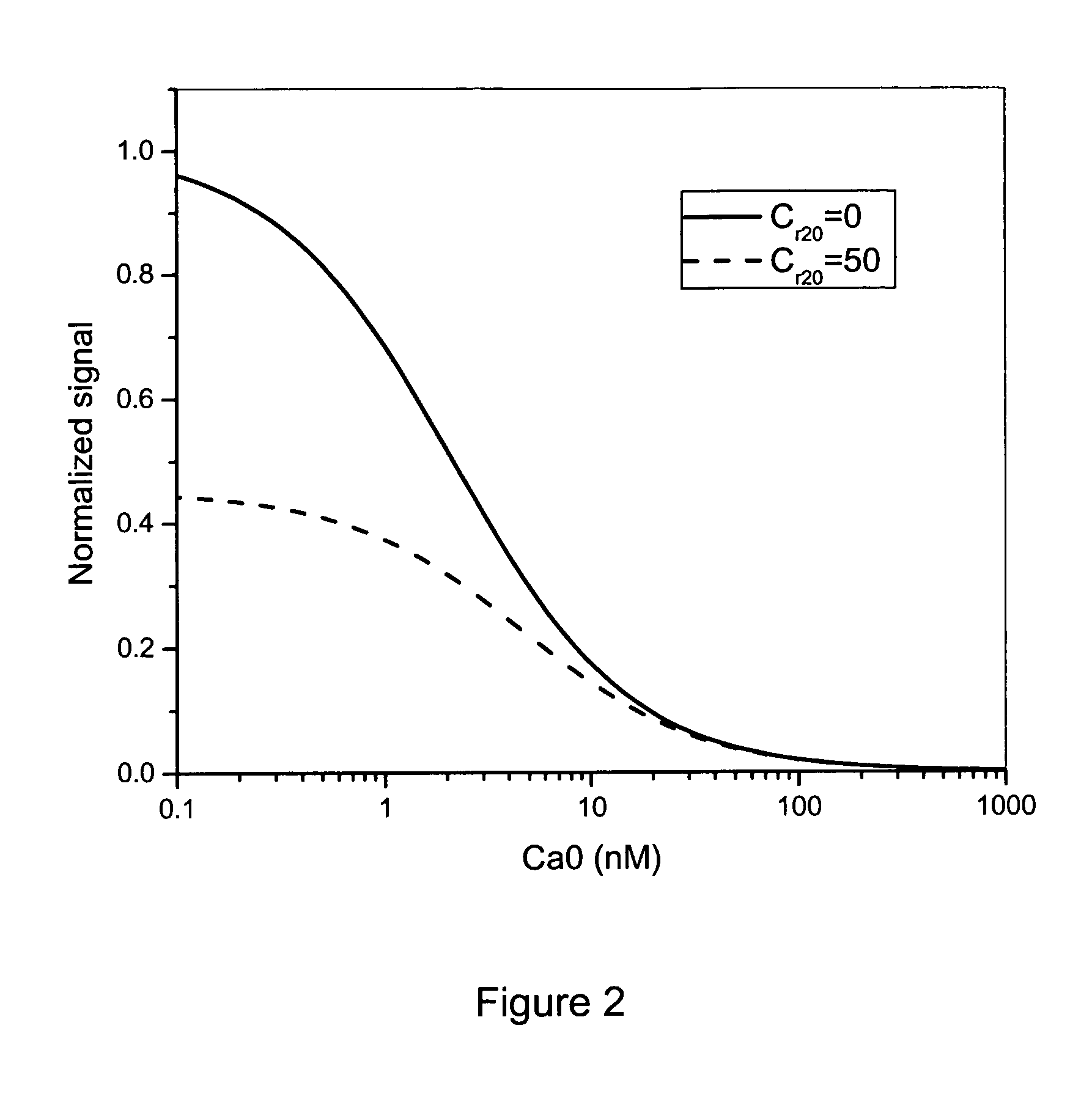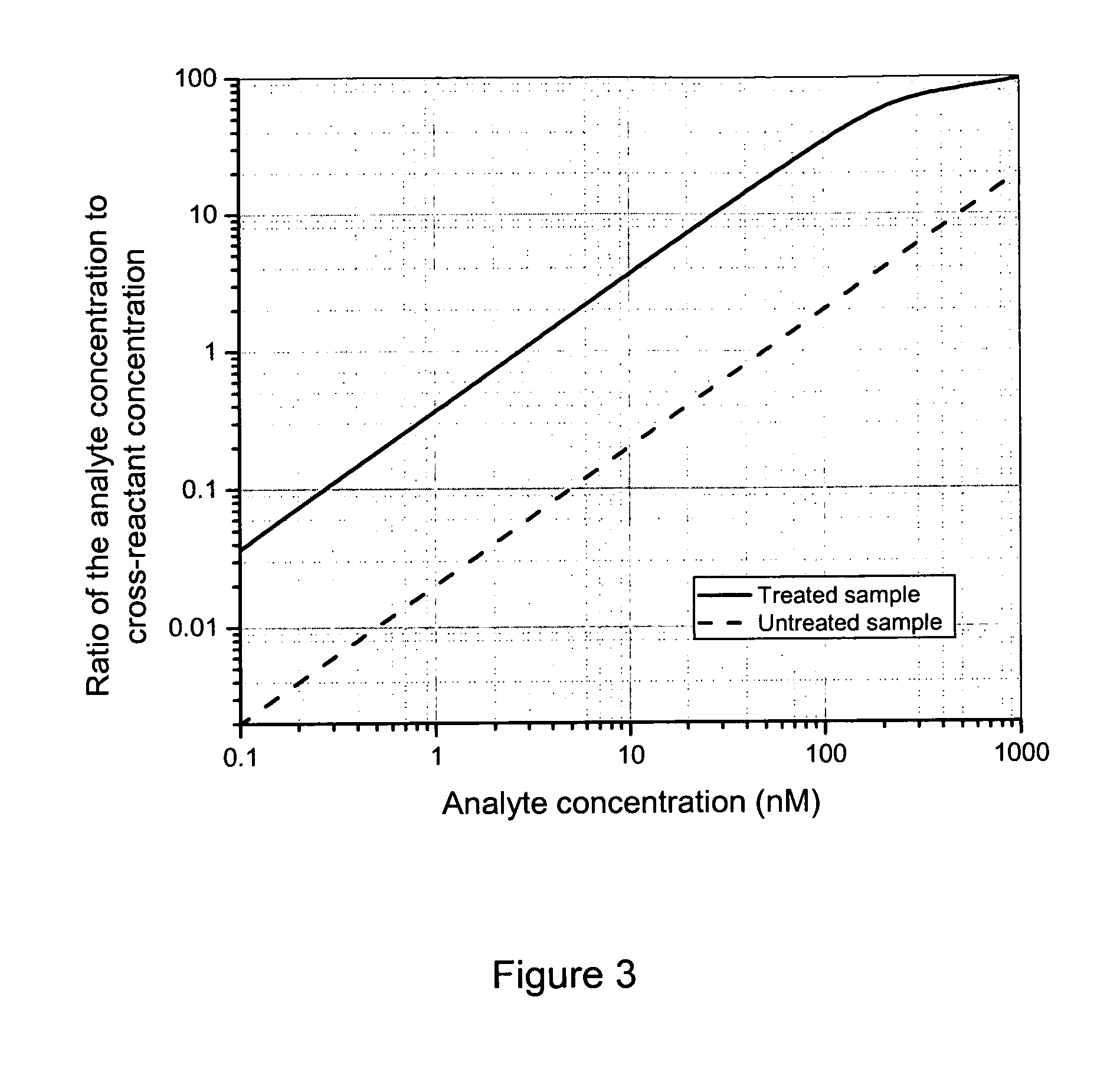Immunoassays with enhanced selectivity
a selective antibody and immunoassay technology, applied in the field of immunoassays with enhanced selectivity, can solve the problems of not being able to quantitatively measure the analyte, not being able to obtain a very specific receptor that will only bind to one specific analyte, and not being able to achieve the effect of quantitative measurement, reducing the concentration of cross-reacting species in the liquid sample, and increasing the specificity of the subsequent assay
- Summary
- Abstract
- Description
- Claims
- Application Information
AI Technical Summary
Benefits of technology
Problems solved by technology
Method used
Image
Examples
Embodiment Construction
[0027] The assay method of the present invention employs a molecularly imprinted polymer (MIP) to selectively absorb cross-reactants that would otherwise reduce the specificity of an assay for a target analyte. More specifically, a novel method of conducting an assay is disclosed wherein a sample that may contain a target analyte and also cross-reactants that may interfere with the signal measured to infer the concentration of the target analyte is first contacted with an MIP solid phase that selectively absorbs the cross-reactants. After the sorbent step of the inventive assay, a binding assay known in the prior art may be used to detect the concentration of target analyte in the sample. The removal of cross-reactants via the MIP dramatically increases the specificity of the overall assay.
[0028] The term “molecularly imprinted polymer (MIP)”, as used herein, means an artificial receptor for an analyte made by forming recognition sites within a polymer matrix that are adapted to th...
PUM
| Property | Measurement | Unit |
|---|---|---|
| magnetic field | aaaaa | aaaaa |
| pressure | aaaaa | aaaaa |
| affinity | aaaaa | aaaaa |
Abstract
Description
Claims
Application Information
 Login to View More
Login to View More - R&D
- Intellectual Property
- Life Sciences
- Materials
- Tech Scout
- Unparalleled Data Quality
- Higher Quality Content
- 60% Fewer Hallucinations
Browse by: Latest US Patents, China's latest patents, Technical Efficacy Thesaurus, Application Domain, Technology Topic, Popular Technical Reports.
© 2025 PatSnap. All rights reserved.Legal|Privacy policy|Modern Slavery Act Transparency Statement|Sitemap|About US| Contact US: help@patsnap.com



